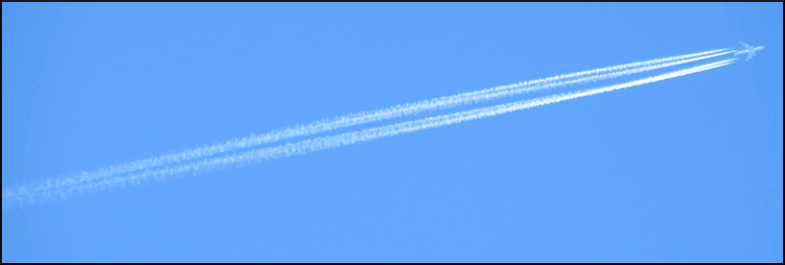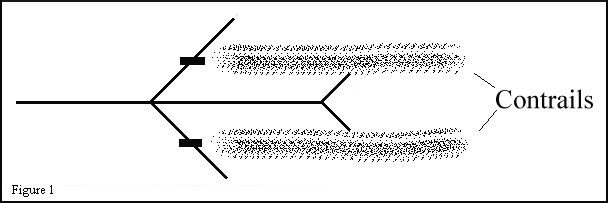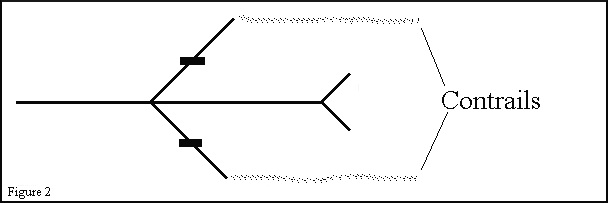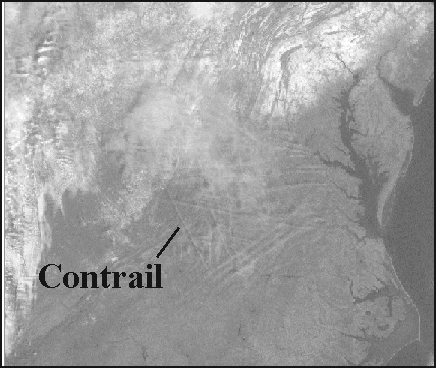Welcome to DU!
The truly grassroots left-of-center political community where regular people, not algorithms, drive the discussions and set the standards.
Join the community:
Create a free account
Support DU (and get rid of ads!):
Become a Star Member
Latest Breaking News
Editorials & Other Articles
General Discussion
The DU Lounge
All Forums
Issue Forums
Culture Forums
Alliance Forums
Region Forums
Support Forums
Help & Search
Environment & Energy
In reply to the discussion: ACS: Fueling greener aviation with hydrogen [View all]OKIsItJustMe
(21,244 posts)3. What's a contrail?
https://www.weather.gov/bgm/WeatherInActionContrails#:~:text=Condensation%20trails%2C%20commonly%20called%20contrails,vapor%20pressure%20at%20low%20temperatures
https://www.albany.edu/news-center/news/2024-ualbany-atmospheric-scientist-partners-study-factors-behind-contrail
A hydrogen powered plane will produce water vapor, but a standard jet engine produces water vapor as well.
https://www.bbc.com/news/business-58769351
Now, if it were up to me, there would be many fewer airliners flying, but (thankfully) it’s not up to me.
Weather In Action: Contrails

Condensation trails, commonly called contrails, are narrow cirrus cloud streamers that form behind high flying aircraft. Contrails are formed by two basic processes. The first method of formation relies on hot and humid engine exhaust mixing with air of low vapor pressure at low temperatures. As the added moisture and particulate matter from the exhaust mixes with the cold air, condensation occurs and the streamer is born (Figure 1). These types of contrails are sometimes called exhaust trails.

The second method of formation occurs when an airplane flies through air that is clear but has a relative humidity near 100 percent. The pressure change generated by the air flow over the wing tip causes a reduction in temperature and results in complete saturation of the air. The turbulent vortex generated by the wing tip completes the process and a contrail is generated behind the wing tips (Figure 2). These contrails are not as pronounced as those formed by engine exhaust and are comparatively rare. Contrails formed by this process are sometimes called aerodynamic trails.

Under the right conditions contrails can persist for a prolonged period of time and sometimes evolve into a complete layer of cirrus. Contrails that become large enough can occasionally be seen by satellite. In the satellite picture below several contrails are visible embedded in a thin patch of cirrus near the Virginia/North Carolina border on January 26, 2001. Some transverse banding is also present in the patch of cirrus. The contrails can be distinguished from the parallel transverse bands because they are at irregular angles and intersect the transverse bands.


Condensation trails, commonly called contrails, are narrow cirrus cloud streamers that form behind high flying aircraft. Contrails are formed by two basic processes. The first method of formation relies on hot and humid engine exhaust mixing with air of low vapor pressure at low temperatures. As the added moisture and particulate matter from the exhaust mixes with the cold air, condensation occurs and the streamer is born (Figure 1). These types of contrails are sometimes called exhaust trails.

The second method of formation occurs when an airplane flies through air that is clear but has a relative humidity near 100 percent. The pressure change generated by the air flow over the wing tip causes a reduction in temperature and results in complete saturation of the air. The turbulent vortex generated by the wing tip completes the process and a contrail is generated behind the wing tips (Figure 2). These contrails are not as pronounced as those formed by engine exhaust and are comparatively rare. Contrails formed by this process are sometimes called aerodynamic trails.

Under the right conditions contrails can persist for a prolonged period of time and sometimes evolve into a complete layer of cirrus. Contrails that become large enough can occasionally be seen by satellite. In the satellite picture below several contrails are visible embedded in a thin patch of cirrus near the Virginia/North Carolina border on January 26, 2001. Some transverse banding is also present in the patch of cirrus. The contrails can be distinguished from the parallel transverse bands because they are at irregular angles and intersect the transverse bands.

https://www.albany.edu/news-center/news/2024-ualbany-atmospheric-scientist-partners-study-factors-behind-contrail
UAlbany Atmospheric Scientist Partners to Study Factors Behind Contrail Formation
By Mike Nolan
ALBANY, N.Y. (Oct. 31, 2024) — From the development of new materials that make airplanes lighter to the exploration of alternative fuels, the aviation industry is making strides toward reducing its carbon footprint.
One aspect of flights that is surprisingly bad for the environment is contrails, the long, thin clouds that form behind jet aircraft as they fly through the sky.
…
“Soot particles, formed during fuel combustion inside aircraft engines, are known to dominate the formation of contrail ice particles,” Yu said. “As the aviation industry moves toward sustainable fuels and new engine technologies, soot emissions are being significantly reduced and volatile particles formed in engine exhaust plumes (after emission) become important to analyze.”
…
“Our research indicates that volatile particles can contribute to the number of ice particles in a contrail at medium levels of soot emissions and average temperatures in the air, extending the ranges of conditions when these particles become a factor,” Yu said. “This is important as we assess the climate impact of contrails, both during current flights and for future more sustainable ones.”
…
Hydrogen powered aircraft should not produce soot (the primary cause of contrails) or volatile particles. Since they are flying through the air, they may still produce “aerodynamic trails,” but these can be mitigated by adjusting the flight of the airplane.
By Mike Nolan
ALBANY, N.Y. (Oct. 31, 2024) — From the development of new materials that make airplanes lighter to the exploration of alternative fuels, the aviation industry is making strides toward reducing its carbon footprint.
One aspect of flights that is surprisingly bad for the environment is contrails, the long, thin clouds that form behind jet aircraft as they fly through the sky.
…
“Soot particles, formed during fuel combustion inside aircraft engines, are known to dominate the formation of contrail ice particles,” Yu said. “As the aviation industry moves toward sustainable fuels and new engine technologies, soot emissions are being significantly reduced and volatile particles formed in engine exhaust plumes (after emission) become important to analyze.”
…
“Our research indicates that volatile particles can contribute to the number of ice particles in a contrail at medium levels of soot emissions and average temperatures in the air, extending the ranges of conditions when these particles become a factor,” Yu said. “This is important as we assess the climate impact of contrails, both during current flights and for future more sustainable ones.”
…
A hydrogen powered plane will produce water vapor, but a standard jet engine produces water vapor as well.
https://www.bbc.com/news/business-58769351
Contrails: How tweaking flight plans can help the climate
22 October 2021
Beth Timmins
Business reporter, BBC News
Those wispy white lines that crisscross the skies after an aeroplane flies overhead are far less benign than their fluffy patterns might suggest.
…
Contrails: What changes might help?
Dr Marc Stettler, transport and environment lecturer at Imperial College London, says changing the altitude of fewer than 2% of flights could potentially reduce contrail-linked climate change by a staggering 59%. "Tweaking the flight elevation by just a thousand feet can stop some contrails from forming," he explains.
…
"Our results have been really positive. We were able to predict and avoid around 80% of the contrails with little cost," she says. Prof Voigt adds that very few flights would have to be deviated to win a "large climate impact".
…
22 October 2021
Beth Timmins
Business reporter, BBC News
Those wispy white lines that crisscross the skies after an aeroplane flies overhead are far less benign than their fluffy patterns might suggest.
…
Contrails: What changes might help?
- Adjust flight routes so aircraft can avoid areas where they form
- Teach pilots about new flight plans to avoid contrails
- Introduce a contrails tax, and give airlines a refund if their flights are contrail-free
Dr Marc Stettler, transport and environment lecturer at Imperial College London, says changing the altitude of fewer than 2% of flights could potentially reduce contrail-linked climate change by a staggering 59%. "Tweaking the flight elevation by just a thousand feet can stop some contrails from forming," he explains.
…
"Our results have been really positive. We were able to predict and avoid around 80% of the contrails with little cost," she says. Prof Voigt adds that very few flights would have to be deviated to win a "large climate impact".
…
Now, if it were up to me, there would be many fewer airliners flying, but (thankfully) it’s not up to me.
Edit history
Please sign in to view edit histories.
Recommendations
2 members have recommended this reply (displayed in chronological order):
5 replies
 = new reply since forum marked as read
Highlight:
NoneDon't highlight anything
5 newestHighlight 5 most recent replies
RecommendedHighlight replies with 5 or more recommendations
= new reply since forum marked as read
Highlight:
NoneDon't highlight anything
5 newestHighlight 5 most recent replies
RecommendedHighlight replies with 5 or more recommendations